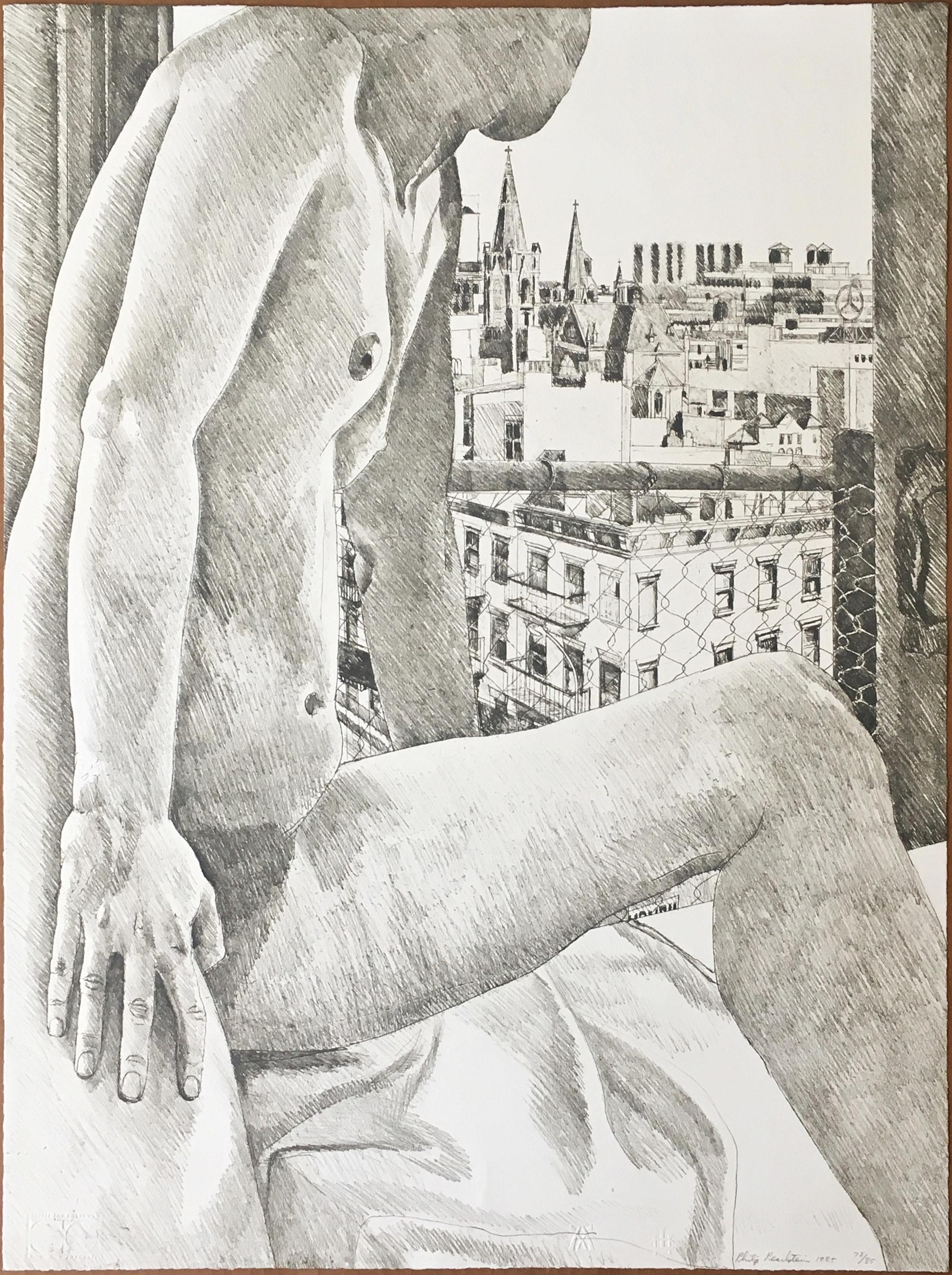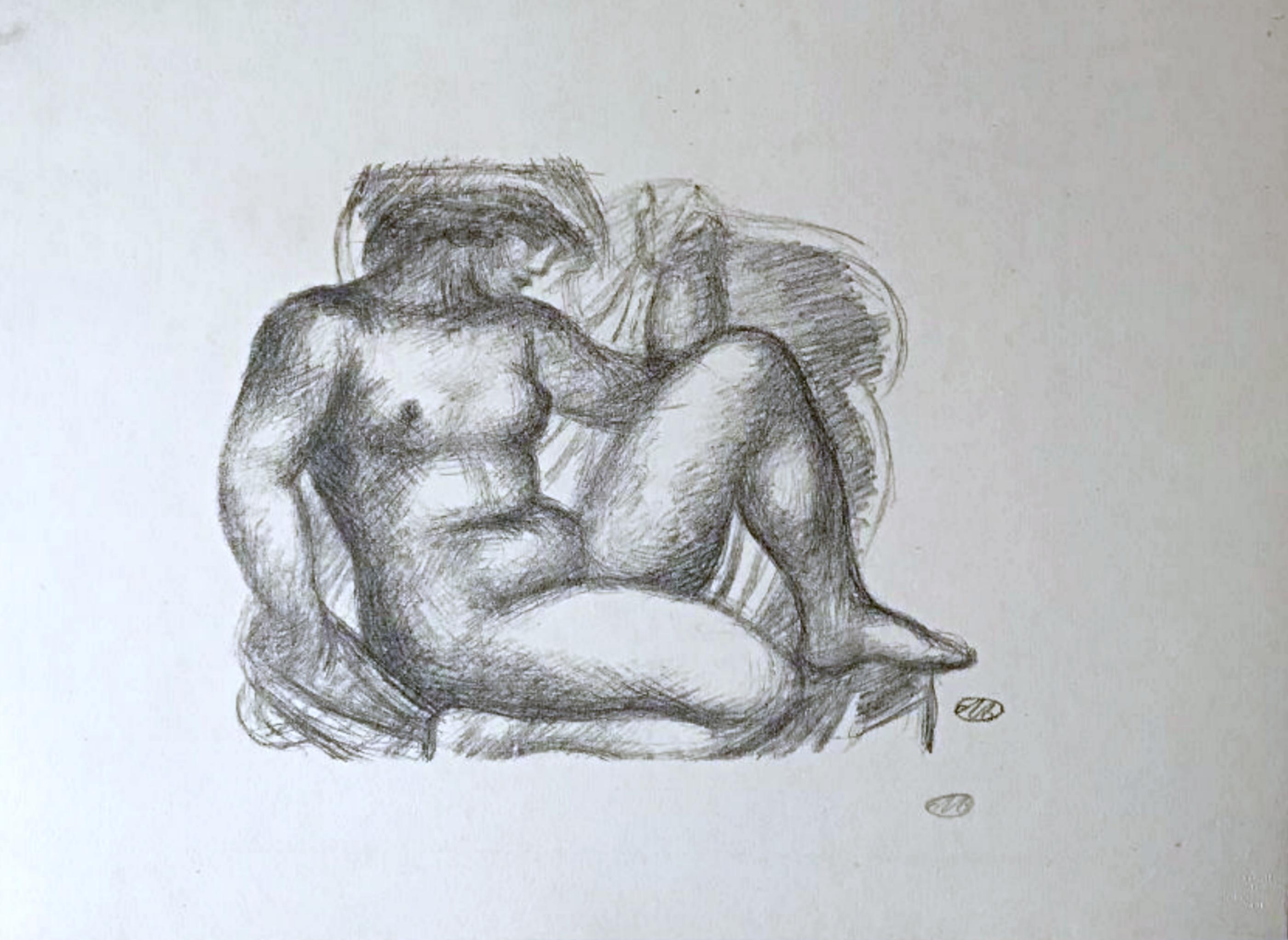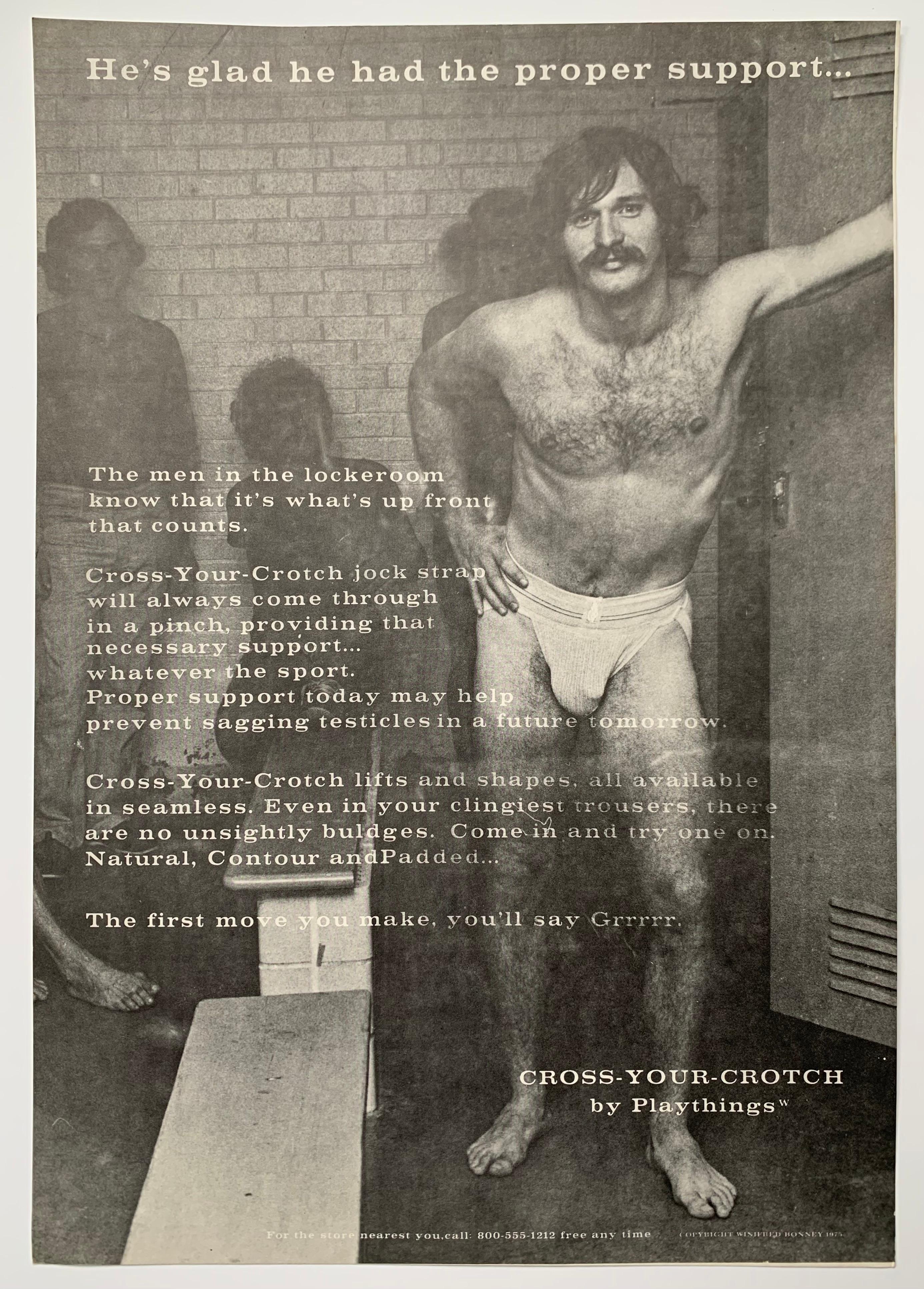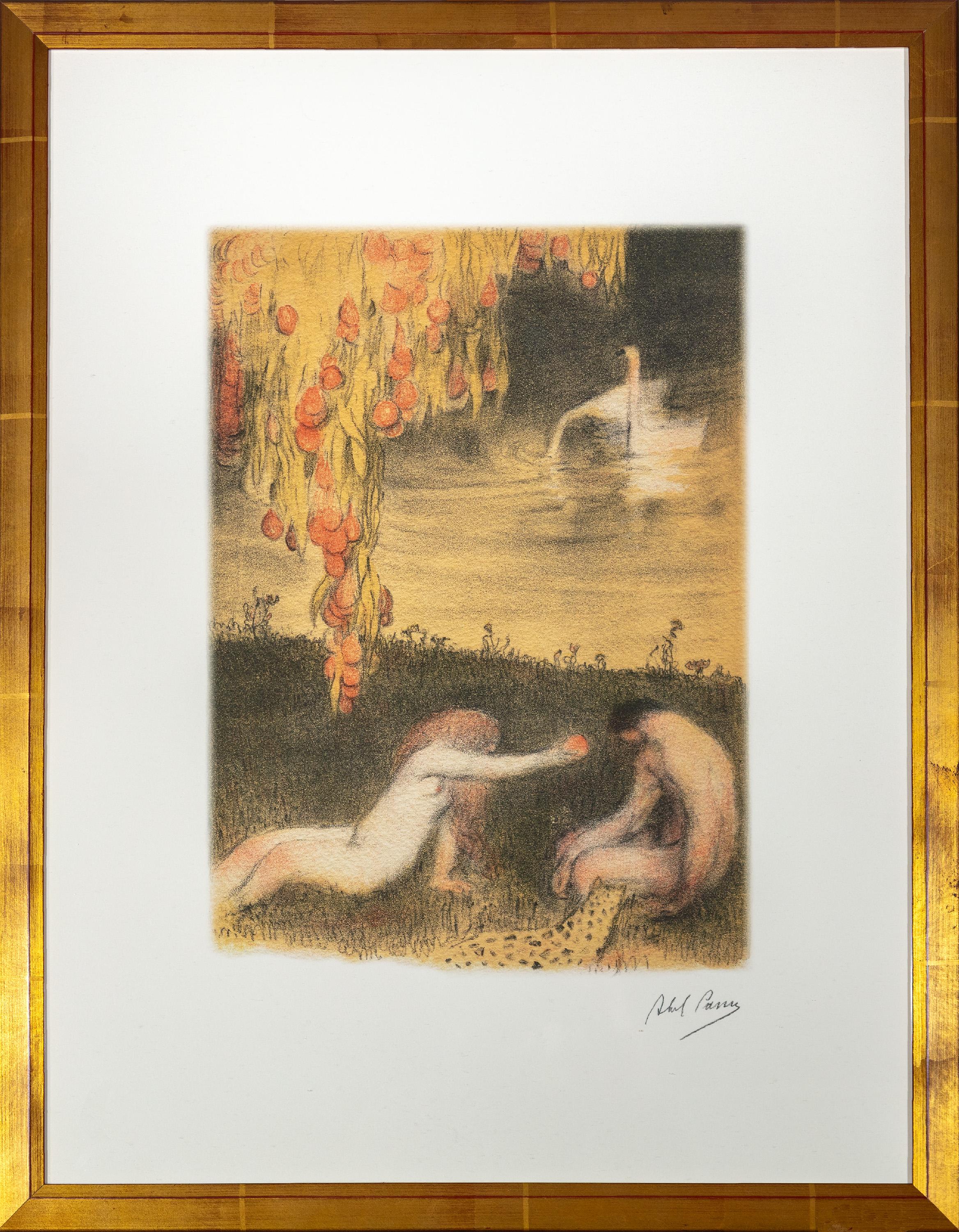Items Similar to The Talisman (so called Dukatenscheisser) - The philosopher's stone -
Want more images or videos?
Request additional images or videos from the seller
1 of 5
Carl PlückebaumThe Talisman (so called Dukatenscheisser) - The philosopher's stone -
About the Item
Carl Maria Plückebaum (1880 Düsseldorf - 1952 ibid.), Der Talismann (sog. Dukatenscheisser), partly colored etching, 11.5 x 8.5 cm (plate size), 26.5 x 20 cm (sheet size), signed by hand below the image on the right "C. Plückebaum" and inscribed by hand at lower left "Der Talismann".
- left and right side of the sheet with browned stripes, otherwise good copy
- The philosopher's stone -
About the artist
Here, Carl Plückebaum gives free rein to his anti-academic impulses and turns the subtle humor of his pictures into crudeness. Following Adrian Ostade's peasants as they go about their needy business, we see a cowardly fellow in a squatting position. His excrement, however, is not the organic remains of digestion, but - like the golden donkey in the Grimm fairy tale - ducats. However, they appear more brown than golden, which is emphasized by the discreet hand-coloring of the picture. The unattractive accumulation is countered by the blossoms decorating the crouching man's hat. Totally absorbed in his action, his activity is evident in the strained expression on his face, giving Plückebaum a whole new verisimilitude to the concept of naturalism. The title "The Talisman" then turns naturalism back to the miraculous, formulating in a humorous way that these legacies are also a "miracle of nature".
About the artist
Coming from a poor background, Carl Plückebaum, who had a walking disability and was of short stature, initially worked as a church restorer. He also took private drawing lessons. In 1901 he won the first prize of the Düsseldorf Museum of Decorative Arts, which enabled him to finance his studies at the Düsseldorf Academy. There he was a pupil of Eduard von Gebhardt and Peter Janssen the Elder, but began to doubt the academic teaching. In 1906 he took part in a group exhibition at the Städtische Kunsthalle Düsseldorf, which violated the academy's statutes and led to his dismissal. However, the extraordinary success with the public confirmed him as an artist and provided him with the financial means for a study trip to Italy. Enchanted by Florence, he retired to the Franciscan monastery of Fisole, where he worked as a fresco painter.
Back in Düsseldorf, he turned increasingly to children's and animal drawings, and in 1907 he was a founding member of the Niederrhein Secessionist Artists' Group. In 1910 he travelled to Italy again, accompanied by his painter friends Walter Ophey and Carl Schmitz-Pleis, visiting Rome and Naples in particular. He then stayed in Munich to study the Old Masters at the Pinakothek. It was in the artistic circles of Schwabing that he met his future wife, the painter Meta Weber. In Düsseldorf, Carl and Meta Plückebaum were prominent representatives of the local art scene and active members of the artists' association Malkasten.
GERMAN VERSION
Carl Maria Plückebaum (1880 Düsseldorf – 1952 ebd.), Der Talismann (sog. Dukatenscheisser), teilkoloriert Radierung, 11,5 x 8,5 cm (Plattengröße), 26,5 x 20 cm (Blattgröße), rechts unter der Darstellung mit „C. Plückebaum“ handsigniert und links unten mit „Der Talismann“ handbezeichnet.
- linke und rechte Außenseite des Blattes mit gebräuntem Streifen, sonst gutes Exemplar
- Der Stein der Weisen -
zum Kunstwerk
Hier lässt Carl Plückebaum seinem antiakademischen Impetus freien Lauf und wendet den subtilen Humor seiner Bilder ins Derbe. Im Anschluss an die ihre Notdurft verrichtenden Bauern eines Adrian Ostade sehen wir einen feisten Kerl in hockender Position. Seine Ausscheidungen sind allerdings nicht der organische Verdauungsrest, sondern – wie beim Goldesel des Grimmschen Märchens – Dukaten. Sie wirken jedoch eher braun als golden, was durch die dezente handkolorierte Farbgebung des Bildes umso mehr hervortritt. Konterkariert wird die unschöne Ansammlung von den Blüten, die den Hut des Hockenden schmückenden. Ganz in seine Handlung vertieft, zeichnet sich seine Tätigkeit im angestrengten Gesichtsausdruck ab, womit Plückebaum dem Begriff des Naturalismus' eine ganz neue Wahrhaftigkeit verleiht. Die Bezeichnung „Der Talismann“ wendet den Naturalismus dann doch wieder ins Wunderbare und formuliert auf humorvolle Weise, dass auch diese Hinterlassenschaften ein ‚Wunder der Natur‘ sind.
zum Künstler
Aus armen Verhältnissen stammend war der gehbehinderte und kleingewachsene Carl Plückebaum zunächst als Kirchenrestaurator tätig. Nebenbei nahm er privaten Zeichenunterricht. 1901 erhielt er den hochdotierten ersten Preis des Düsseldorfer Kunstgewerbemuseums, wovon er sein Studium an der Düsseldorfer Akademie finanzieren konnte. Dort war er Schüler von Eduard von Gebhardt und Peter Janssen d. Ä., begann aber zusehends an der akademischen Lehre zu zweifeln. 1906 beteiligte er sich an einer Gruppenausstellung in der Städtischen Kunsthalle Düsseldorf, was gegen die Statuten der Akademie verstieß und zu seiner Entlassung führt. Der außerordentliche Erfolg beim Publikum bestätige ihn jedoch als Künstler und bescherte ihm die finanziellen Mittel, um eine Studienreise nach Italien anzutreten. Begeistert von Florenz, zog er sich in das Franziskanerkloster von Fisole zurück und war dort als Freskenmaler tätig.
Wieder in Düsseldorf widmete er sich zusehend Kinder- und Tierzeichnungen und war 1907 Gründungsmitglied der der sezessionistischen Künstlergruppe Niederrhein. 1910 brach er in Begleitung seiner Malerfreunde, Walter Ophey und Carl Schmitz-Pleis, erneut nach Italien auf und bereiste insbesondere Rom und Neapel. Anschließend hielt er sich in München auf, um in der Pinakothek die Alten Meister zu studieren. In den Schwabinger Künstlerkreise lernte er seine spätere Frau, die Malerin Meta Weber, kennen. In Düsseldorf waren Carl und Meta Plückebaum prominente Vertreter der dortigen Kunstszene und rege Mitglieder des Künstlervereins Malkasten.
- Creator:Carl Plückebaum (1880 - 1952, German)
- Dimensions:Height: 10.24 in (26 cm)Width: 7.88 in (20 cm)Depth: 0.4 in (1 cm)
- Medium:
- Movement & Style:
- Period:
- Condition:
- Gallery Location:Berlin, DE
- Reference Number:1stDibs: LU2438212326572

About the Seller
5.0
Vetted Seller
These experienced sellers undergo a comprehensive evaluation by our team of in-house experts.
Established in 2014
1stDibs seller since 2023
7 sales on 1stDibs
Typical response time: 6 hours
- ShippingRetrieving quote...Ships From: Berlin, Germany
- Return PolicyA return for this item may be initiated within 14 days of delivery.
More From This SellerView All
- Balaclava - The target in sight -Located in Berlin, DEHeinrich Haberl (1869 Passau to 1934 Munich), Sturmhaube, c. 1900. drypoint, 14 x 10 cm (platemark), 28 x 21 cm (sheet size), 39 x 29 cm (passe-partout), titled "Sturmhaube" in lead at lower left and inscribed "Kaltnadelradierung", signed and locally inscribed "Heinrich Haberl Mchn. [Munich]" at lower right, inscribed again in lead on verso and with old collection stamp. - slightly darkened, fixed and mounted - The target in sight - About the artwork The theatrical "role-portrait" is to be seen against the background of the Rembrandt cult, which reached its climax at the end of the 19th century. The soldier seems to have stepped straight out of Rembrandt's Night Watch (1642) to fix something outside the picture with an alert and ready gaze. The steeply rising brim of the morion frames the gaze and thus perspectivises it as the actual 'pictorial action'. The gaze represents both the vigilant defence and the visionary goal of the battle. Not only the subject, but also the style of the etching needle reflect Rembrandt's understanding of the times. Strong contrasts of light and dark are created in a virtuoso free stroke, without losing the effect of the reflections on the helmet and in the eyes. This shows a kinship with the early prints of Lovis Corinth, who also saw himself as an artist in the role of the knight. Against this background, Haberl's picture can also be seen as a representation of his artistic self-image. About the artist Heinrich Haberl first attended the art school in Nuremberg and from 1892 studied at the Munich Academy. There he was a master student of Johann Leonhard von Raab, Rudolf von Seitz, Franz von Defregger...Category
Early 19th Century Realist Figurative Prints
MaterialsEtching
- Agony - The architecture of decay -Located in Berlin, DEJörg Olberg (*1956 Dresden), Agony, 1987. etching, E.A. (edition of 30), 24 x 17 cm (image), 46 x 37 cm (sheet), each signed in pencil lower right "Olberg" and dated "IX [19]87", inscribed lower left "E.A. [Epreuve d'Artiste]". - minimal crease and dust stains in the broad margin - The architecture of decay - About the artwork Jörg Olberg draws here the sum of his artistic study of the Berlin ruins, which were still present in the cityscape well into the 80s. With his work "Agony" he creates an allegory of decay. Positioned in the landscape of ruins, a ruined house grows before the viewer, rising like the Tower of Babel into the sky, its roof and gable brightly illuminated by the sun. But already the roof shows mostly only the rafters, and as the gaze is drawn further down, the building visibly disintegrates, the beams protruding in all directions looking like splintered bones. Slowly but inexorably - in agony - the house will collapse in on itself and become nothing more than the burial mound of itself. At the same time, the small-scale stone composition and the plaster form a pattern-like ornamentation of decay. The tension in the picture is fed by the counter-movement of growth and collapse, which is heightened by the dramatic formation of clouds. The swirls of clouds are reminiscent of a world landscape...Category
1980s Realist Figurative Prints
MaterialsPaper, Etching
- View of a coastal town / - The Pilgrim's View -Located in Berlin, DEAlbert Ernst (1909 Fronhofen - 1996 Hamburg), View of a Coastal Town, etching, 30 x 37 cm (picture), 45 x 50.5 cm (frame), signed in pencil lower right "Albert Ernst", framed under g...Category
Mid-20th Century Realist Landscape Prints
MaterialsEtching
- General Wilhelm von Blume - Visionary retrospective -Located in Berlin, DEBernhard Pankok (1872 Münster - 1943 Baierbrunn), General Wilhelm von Blume, 1915, aquatint etching, 34 x 29.5 cm (sheet size), 26 x 22 cm (plate size), signed in the plate at upper left, in pencil at lower right and dated in pencil at lower left. - At lower left old collection stamp, at the right broad margin with a small spot, otherwise very good condition. About the artwork The 1915 aquatint etching of General Wilhelm von Blume is based on a 1912 oil painting in the LWL-Museum für Kunst und Kultur in Münster. A second oil portrait of the general by Pankok is in the Staatsgalerie Stuttgart. When Pankok painted the first oil portrait in 1912, the general had already been retired for 16 years. It is therefore a retrospective portrait. Accordingly, the orientation of his head is such that he is looking back in both the oil painting and the etching. Without fixing on anything in particular, he looks thoughtfully inwards and reflects on his life. Uniformed and highly endowed, it is his military activities in particular that he is reviewing attentively and, as his gaze reveals, quite critically. Pankok has literally written the sum of his experiences on Wilhelm von Blume's face: The physiognomy is a veritable landscape of folds, furrows, ridges and gullies, all the more striking against the flat background. It is clear that each of the medals was also won through suffering. However, by breaking the boundaries of the picture, his bust appears as an unshakable massif, which gives the general a stoic quality. The fact that the design of the portrait was important to Pankok can be seen from the different versions, the present sheet being the third and probably final revision, which Pankok dates precisely to 18 February 1915. Compared with the previous state, the light background now has a dark area against which the sitter's face stands out, the dark background in turn combining with the uniform to create a new tension in the picture. Pankok's taking up of the portrait of the high-ranking military veteran and its graphic reproduction can also be seen in relation to the First World War, which had broken out in the meantime. In the face of modern weapons of mass destruction, Wilhelm von Blume's warfare and military writings were relics of a bygone, more value-oriented era. About the artist After studying at the Düsseldorf Art Academy from 1889 to 1891 under Heinrich Lauenstein, Adolf Schill, Hugo Crola, and Peter Janssen the Elder, Bernhard Pankok went to Munich in 1892, where he worked primarily as a graphic artist for the two major Jugendstil magazines "Pan" and "Jugend," which established his artistic success. Through this work he met Emil Orlik, with whom he had a lifelong friendship. In 1897, he exhibited his first furniture, and in 1898, together with Richard Riemerschmid, Bruno Paul and Hermann Obrist...Category
1910s Realist Portrait Prints
MaterialsEtching
- The Lost TraceBy Ernst FuchsLocated in Berlin, DEErnst Fuchs (1930 Vienna - 2015 ibid), The Lost Trace, 1972. Vernis mou and aquatint etching, 46.8 x 36.4 cm (plate), 66 x 50 cm (sheet), 69.5 x 53.5 cm (frame), WVZ Hartmann no. 185...Category
1970s Surrealist Figurative Prints
MaterialsEtching
- Rudolf v. Rittner as Florian Geyer - Last man standing -By Lovis CorinthLocated in Berlin, DELovis Corinth (1858 Tapiau - 1925 Zandvoort), Rudolf von Rittner as Florian Geyer, 1924 (Müller 854), drypoint signed in pencil. 20.4 × 14.2 (plate size), 37.7 × 30.6 cm (sheet size). Published by Karl Nierendorf, Berlin. Framed in a passepartout. - Strong, precise impression. Frame a little bit rubbed and with two small damages. About the artwork The knight is a leitmotif in Lovis Corinth's work, culminating in his Self-Portrait in Armour of 1914. Of all the paintings on this theme, Corinth most often depicted Florian Geyer. Descended from a Franconian noble family, he fought for the freedom of the peasants during the peasant wars of the Reformation, first diplomatically and then militarily, leading the legendary Schwarzen Haufen (Black Troops). The name derives from the black uniforms with which Geyer dressed the peasants willing to fight. During the Napoleonic occupation, the freedom fighter Florian Geyer was sung about by the Romantics, and the free corps Die Schwarze Schaar, founded in 1813 by Major von Lützow, succeeded the Schwarzer Haufen. It was against this historical background that Gerhard Hauptmann wrote the revolutionary drama Florian Geyer, which premiered at the Deutsches Theater in Berlin in 1896. While the actor Rudolf Rittner, who would later appear in Fritz Lang's films, initially played the role of Schäferhans, he took over the leading role in the new production at Berlin's Lessing Theatre in 1904, again directed by Emil Lessing, which established his fame as an actor. Hauptmann himself praised the acting. He wrote to Hugo von Hofmannsthal: "It went quite well with Florian Geyer. In any case, I had the great pleasure of seeing the play again in an admirable performance". And Lovis Corinth was so taken with Rittner's performance that he painted an oil portrait of him in the role of Florian Geyer in 1906. After two further graphic versions in 1915 and 1920/21, Corinth returned to the painting a year before his death and almost twenty years after the oil painting to create this graphic version in 1924. Even the inscription in the picture was taken over. This proves all the more the importance of the knight and freedom fighter for Corinth's self-image. The oil painting, in particular, proclaims the single-minded determination to fight to the last for the values defended, manifested in the oil painting by the tattered flag held out to the enemy. There is a parallel with Rainer Maria Rilke's 1899 story The Cornet, in which the protagonist goes down with the flag that he first saved at the risk of his life. Consequently, the portrait is also a self-portrait, and the knight's armour is not an academic costume or an ironic refraction, but an expression of Corinth's self-image, which also includes his self-representation as an artist. The Secession poster...Category
1920s Expressionist Figurative Prints
MaterialsEtching
You May Also Like
- Nude Woman Combing Her HairBy Carl Joseph BauerLocated in San Francisco, CAThis artwork titled "Nude woman combing Her Hair" is an original etching on wove paper by German/American artist Carl Joseph Bauer, 1895-1964. It is signed in pencil at the lower right corner by the artist. The image (plate mark) size is 5.5 x 5.5 inches, framed size is 19.85 x 19 inches. It is framed in a custom wooden gold frame, with gold color bevel and fabric matting. It is in excellent condition. About the artist. Born in 1895, German painter, etcher and illustrator Carl Joseph Bauer studied at the Academy of Fine Arts in Munich under Wilhelm von Diez and Angelo Jank. Among many others, Bauer exhibited his work at the famous "Glaspalast" (Glass Palace) in Munich and was President of the Allotria Art Association for ten years. From 1914-1928, Bauer created Art Deco style etchings of women and nudes, including Hollywood luminaries Greta Garbo and Norma Shearer...Category
Early 20th Century Realist Nude Prints
MaterialsEtching
- Untitled Nude, from Atelier International Portfolio by renowned realist artistBy Philip PearlsteinLocated in New York, NYPhilip Pearlstein Untitled Nude, from Atelier International Portfolio, 1985 Etching. on wove paper Hand signed, numbered 78/85, and dated on the lower front with printer's and publisher's blind stamps. 30 × 22 1/2 inches Unframed This vintage (mid 1980s) etching by Philip Pearlstein is hand signed, numbered and dated from the edition of 85. The late Philip Pearlstein is one of the most renowned realist painters in the world, but has become best recognized of late as Andy Warhol's former roommate in Pittsburgh, who traveled together with Warhol to New York. The Warhol museum in fact hosted a show of the two unlikely artists and roommates. Philip Pearlstein Born in 1924 in Pittsburgh, Pennsylvania, USA, Philip Pearlstein died in 2022. He is considered to be one of the masters of new figuration and modernist realism. He has been examining the question of how the model is represented since the 1960s, his complex works straddling the line between naturalism, abstraction and hyperrealism. His still lives in oil feature nudes with mask...Category
1980s Realist Nude Prints
MaterialsEtching
- Seated Nude (version 1) from the portfolio Maillol: Sculpture and Lithography)By Aristide MaillolLocated in New York, NYAristide Maillol Seated Nude (version 1) from the portfolio Aristide Maillol: Sculpture and Lithography, 1925 Lithograph on watermarked paper 12 1/2 × 19 1/2 inches Edition AP Hand-s...Category
1920s Realist Figurative Prints
MaterialsLithograph
- Undergarment Model (1970s Gay Bathhouse Jockstrap Ad)Located in Wilton Manors, FLVintage jockstrap ad poster, 1975. Offset lithograph on paper measures 18.5 x 12.75 inches. Copyright Winifred Bonney. Original offset period print on perio...Category
1970s Realist Figurative Prints
MaterialsOffset
- Stride for Days and Stride for Days Upside Down DiptychLocated in Deddington, GBStride for Days and Stride for Days Upside Down Diptych by Amy Gardner [2021] limited_edition Screenprint Edition number 25 Image size: H:59.4 cm x W:42 c...Category
21st Century and Contemporary Realist Figurative Prints
MaterialsPaper, Screen
- "…And He Did Eat" from the Genesis PortfolioBy Abel PannLocated in Milwaukee, WIAbel Pann (1883–1963) was a Russian-born Jewish painter and print-maker who settled in the Talpiot neighborhood of Jerusalem in the early twentieth century and taught at the Bezalel ...Category
1950s Realist Figurative Prints
MaterialsPaper, Giclée
Recently Viewed
View AllMore Ways To Browse
Chagall Exodus Suite
Clifford Isaac Addams On Sale
Eddie Parker
Grosz Interregnum
Hermes And Apple Collaboration
Hermes Apple Collaboration
Hermes Enchanted Garden
Hermes Kobe
Hermes Nagoya
Hermes Osaka
Hermes Window Display Designer
Ian Hugo
Jacques Marie Gaston Onfroy De Breville
Jim Smyth On Sale
Leroy Neiman Golf Books
Patrick Moya
Paul Mccrane
R And I Antique Reproductions



